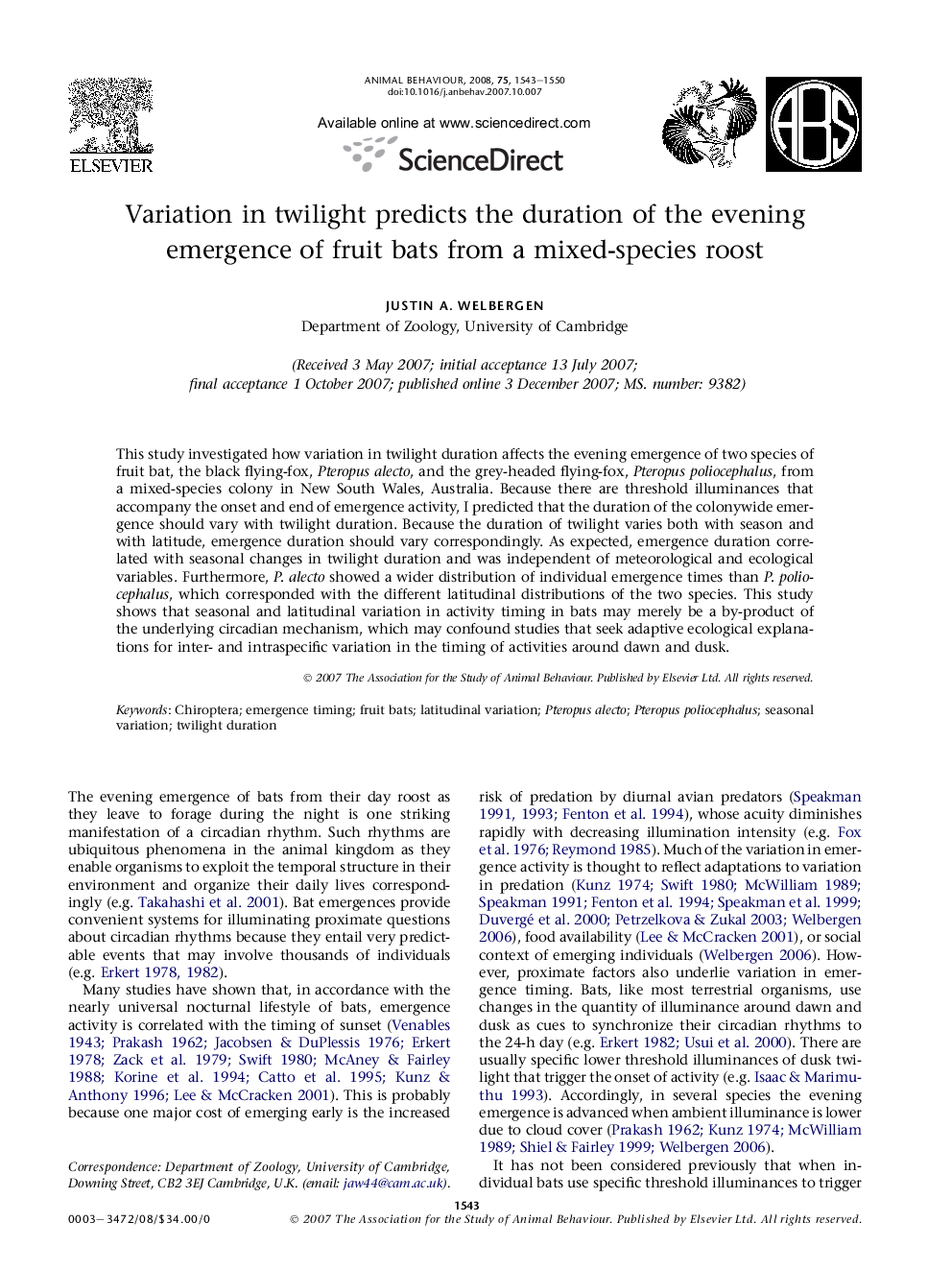| Article ID | Journal | Published Year | Pages | File Type |
|---|---|---|---|---|
| 2417770 | Animal Behaviour | 2008 | 8 Pages |
This study investigated how variation in twilight duration affects the evening emergence of two species of fruit bat, the black flying-fox, Pteropus alecto, and the grey-headed flying-fox, Pteropus poliocephalus, from a mixed-species colony in New South Wales, Australia. Because there are threshold illuminances that accompany the onset and end of emergence activity, I predicted that the duration of the colonywide emergence should vary with twilight duration. Because the duration of twilight varies both with season and with latitude, emergence duration should vary correspondingly. As expected, emergence duration correlated with seasonal changes in twilight duration and was independent of meteorological and ecological variables. Furthermore, P. alecto showed a wider distribution of individual emergence times than P. poliocephalus, which corresponded with the different latitudinal distributions of the two species. This study shows that seasonal and latitudinal variation in activity timing in bats may merely be a by-product of the underlying circadian mechanism, which may confound studies that seek adaptive ecological explanations for inter- and intraspecific variation in the timing of activities around dawn and dusk.
